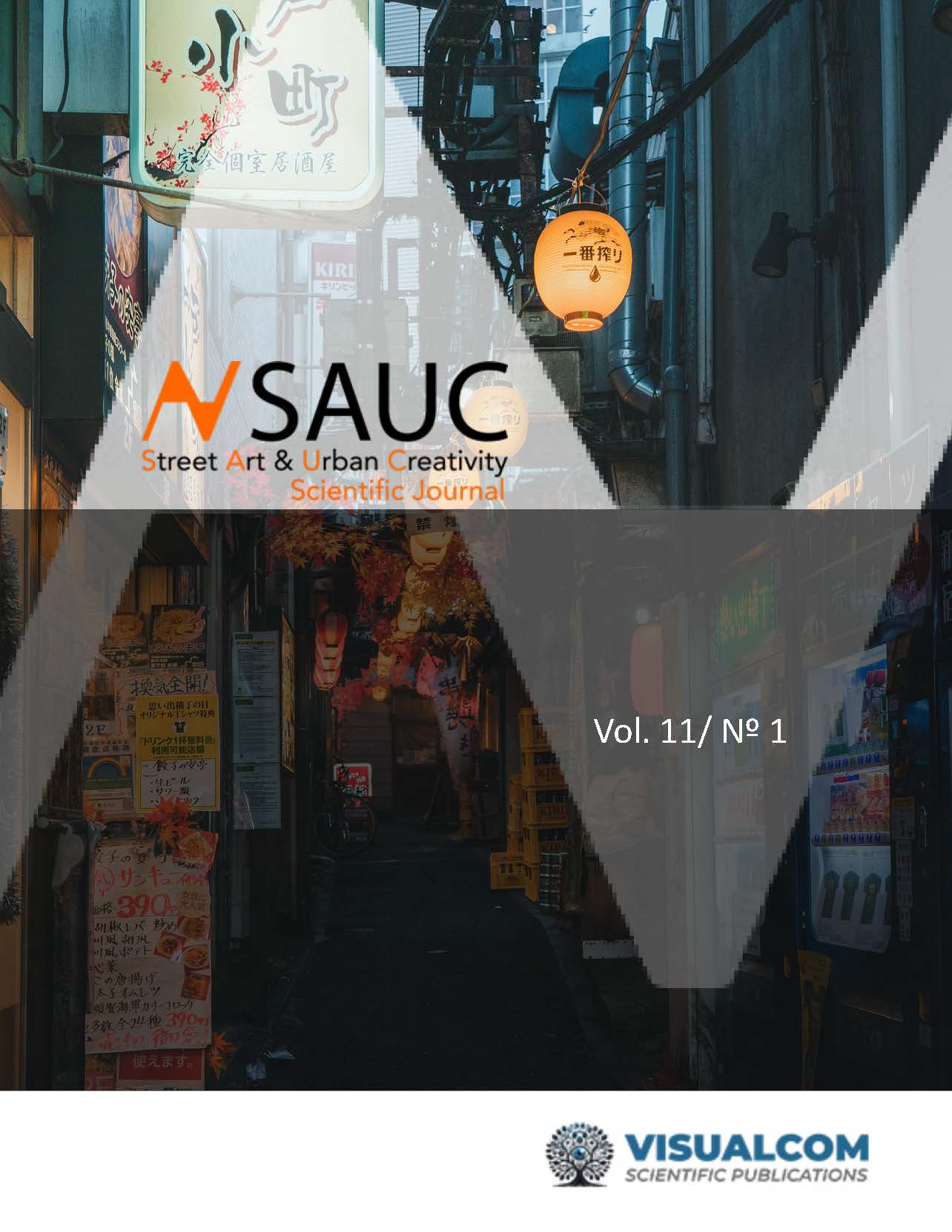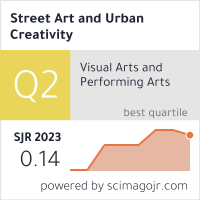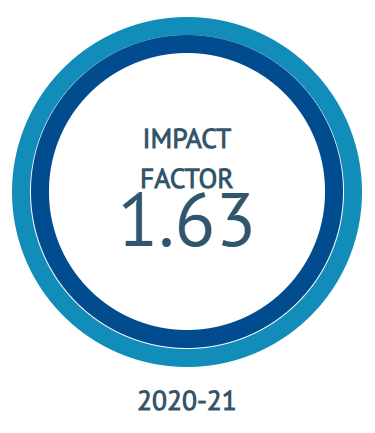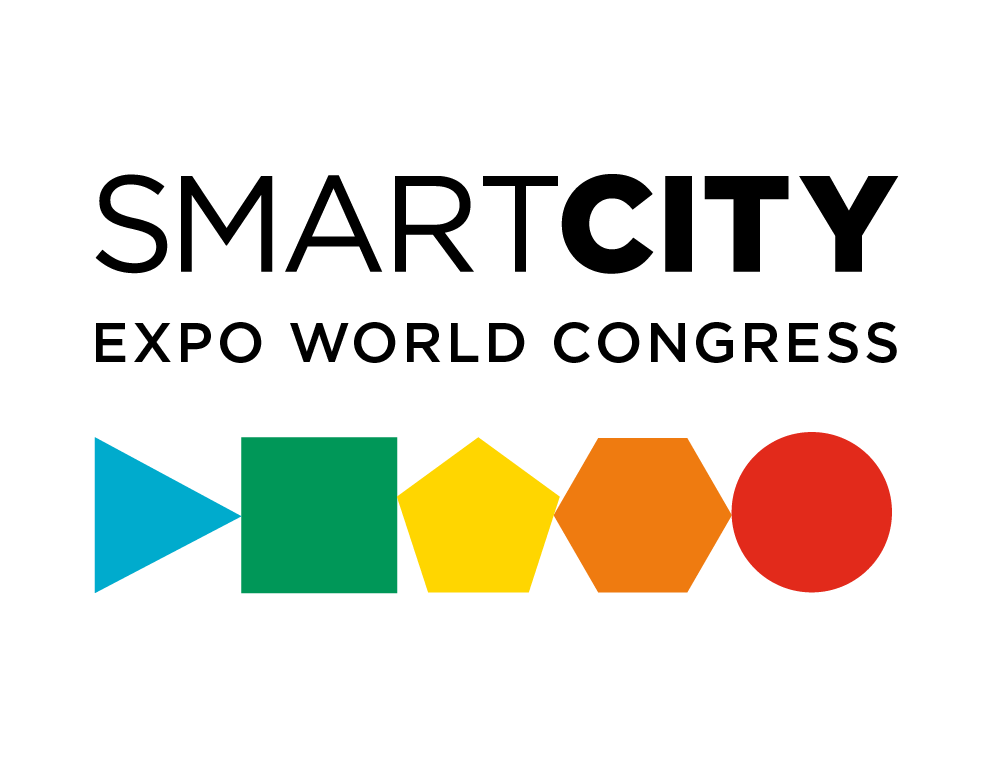Influencia de startups en las Ciudades Creativas
Análisis del desempeño de empresas emergentes en la construcción de la Marca Ciudad
DOI:
https://doi.org/10.25765/sauc.v11.5679Palabras clave:
Ciudades Creativas, Startups, Noticias, Prensa, Marca Ciudad, Emprendimiento, EspañaResumen
El concepto de Ciudad Creativa surge del área de las ciencias económicas denominada “economía creativa”. En este marco son relevantes las actividades, bienes y servicios con capacidad de dinamizar la economía (Herrera-Medina et al., 2013). Como ejemplo, las startups cobran interés, como fuente de innovación, al implementar nuevas tecnologías para reinventar modelos de negocio (Aljalahma y Slof, 2022). Según Informa D&B (2022), el 62% de startups españolas se concentra en Madrid, Cataluña y Andalucía. El objetivo es analizar la influencia de las primeras sobre dichas comunidades autónomas y estudiar su tratamiento en prensa. Se realiza una revisión sistemática de literatura científica de más de un centenar de trabajos, así como un análisis de contenido de 255 piezas informativas publicadas en Google News en 2024. Se abordan claves que relacionan a las startups, como motor económico, en la promoción de Ciudades Creativas y en la construcción de la Marca Ciudad.
Descargas
Estadísticas globales ℹ️
|
498
Visualizaciones
|
159
Descargas
|
|
657
Total
|
|
Citas
Aljalahma, J., & Slof, J. (2022). An Updated Systematic Review of Business Accelerators: Functions, Operation, and Gaps in the Existing Literature. Journal of Open Innovation: Technology, Market, and Complexity, 8(4), 214. https://doi.org/10.3390/joitmc8040214 DOI: https://doi.org/10.3390/joitmc8040214
Bereitschaft, B. (2019). Are walkable places tech incubators? Evidence from Nebraska’s ‘Silicon Prairie’. Regional Studies, Regional Science, 6(1), 339-356. https://doi.org/10.1080/21681376.2019.1620631 DOI: https://doi.org/10.1080/21681376.2019.1620631
Boric-Cvenic, M., & Mesic, H. (2019). Role of creative industries in the process of branding and shaping a city image. Lingua Montenegrina, 23(1), 257-282. https://doi.org/10.46584/lm.v23i1.683 DOI: https://doi.org/10.46584/lm.v23i1.683
Cabeza Ramírez, L. J., Sánchez Cañizares, S., & Fuentes García, F. (2017). Entrepreneurship as a dynamic field of study: A bibliometric analysis of research output. Tourism & Management Studies, 13(3), 59-71. https://doi.org/10.18089/tms.2017.13307 DOI: https://doi.org/10.18089/tms.2017.13307
Carlucci, D., Spender, J., & Schiuma, G. (Eds.). (2014). Knowledge and management models for sustainable growth proceedings. Institute of Knowledge Asset Management.
Colomb, C. (2012). Pushing the Urban Frontier: Temporary Uses of Space, City Marketing, and the Creative City Discourse in 2000S Berlin. Journal of Urban Affairs, 34(2), 131-152. https://doi.org/10.1111/j.1467-9906.2012.00607.x DOI: https://doi.org/10.1111/j.1467-9906.2012.00607.x
De Las Heras-Pedrosa, C., Jambrino-Maldonado, C., Rando-Cueto, D., & Iglesias-Sánchez, P. P. (2023). Trends of research on women’s entrepreneurship on the management of happiness and well-being in organisations. Journal of Management Development, 43(2), 150-169. https://doi.org/10.1108/JMD-04-2023-0127 DOI: https://doi.org/10.1108/JMD-04-2023-0127
De Noronha Guedes, M. (2012). Como Poderá o Marketing Recriar o Significado das Cidades, Atribuído às Indústrias Criativas? : Marca: Porto Criativo [Tesis de Maestría] Universidade Catolica Portuguesa. http://hdl.handle.net/10400
Durmaz, S. B. (2012). Creative clusters and place-making: Analysing the quality of place in soho and beyoglu. University of Nottingham. https://eprints.nottingham.ac.uk/id/eprint/12720
Evans, G. (2009). Creative Cities, Creative Spaces and Urban Policy. Urban Studies, 46(5-6), 1003-1040. https://doi.org/10.1177/0042098009103853 DOI: https://doi.org/10.1177/0042098009103853
Fiorentino, S. (2018). Re-making urban economic geography. Start-ups, entrepreneurial support and the Makers Movement: A critical assessment of policy mobility in Rome. Geoforum, 93, 116-119. https://doi.org/10.1016/j.geoforum.2018.05.016 DOI: https://doi.org/10.1016/j.geoforum.2018.05.016
Florida, R. (2002). The Rise of the Creative Class: And how it’s transforming work, leisure, community, and everyday life. Basic Books.
He, S. (2019). The creative spatio-temporal fix: Creative and cultural industries development in Shanghai, China. Geoforum, 106, 310-319. https://doi.org/10.1016/j.geoforum.2017.07.017 DOI: https://doi.org/10.1016/j.geoforum.2017.07.017
Herrera-Medina, E., Molina-Prieto, L. F., & Bonilla-Estevez, H. (2013). Ciudades creativas: ¿paradigma económico para el diseño y la planeación urbana? Bitácora Urbano Territorial, 22(1). https://revistas.unal.edu.co/index.php/bitacora/article/view/11-20
Informa D&B. (2022). Las empresas start-up en España (Informa Business by Data). https://cdn.informa.es/sites/5c1a2fd74c7cb3612da076ea/content_entry5c5021510fa1c000c25b51f0/633aa6751106d100f546dac9/files/start_up_2022_v1.pdf?1664788085
Jung, S. (2018). A Study on Craft as Cultural Assets of the City and Craft Cities—Focused on UNESCO Creative City Case. The Journal of Culture Contents, 14, 81-108. https://doi.org/10.34227/TJOCC.2018..14.81 DOI: https://doi.org/10.34227/tjocc.2018..14.81
Kapferer (2005). The new strategic brand management: Creating and sustaining brand equity long term. Choice Reviews Online, 42(09), 42-5362-42-5362. https://doi.org/10.5860/CHOICE.42-5362 DOI: https://doi.org/10.5860/CHOICE.42-5362
Keane, M., & Chen, Y. (2017). Entrepreneurial solutionism, characteristic cultural industries and the Chinese dream. International Journal of Cultural Policy, 25(6), 1-13. https://doi.org/10.1080/10286632.2017.1374382 DOI: https://doi.org/10.1080/10286632.2017.1374382
Kong, L., & O’Connor, J. (2009). Creative economies, creative cities: Asian-European perspectives (Vol. 98). Springer. DOI: https://doi.org/10.1007/978-1-4020-9949-6
Kotler, P., & Armstrong, G. (2010). Fundamentos de marketing. Pearson Educación. https://frrq.cvg.utn.edu.ar/pluginfile.php/14584/mod_resource/content/1/Fundamentos%20del%20Marketing-Kotler.pdf
Landry, C. (2008). The creative city: A toolkit for urban innovators. Comedia ; Earthscan.
Lee, B.M. (2016). Processes and Outcomes of Creative City Policies: Case Studies on UK-Tech City. Journal of the Economic Geographical Society of Korea, 19(4), 597-615. https://doi.org/10.23841/EGSK.2016.19.4.597 DOI: https://doi.org/10.23841/egsk.2016.19.4.597
Leslie, D., & Hunt, M. (2013). Securing the Neoliberal City: Discourses of Creativity and Priority Neighborhoods in Toronto, Canada. Urban Geography, 34(8), 1171-1192. https://doi.org/10.1080/02723638.2013.823729 DOI: https://doi.org/10.1080/02723638.2013.823729
Martínez, M. A., Herrera, M., Contreras, E., Ruíz, A., & Herrera-Viedma, E. (2015). Characterizing highly cited papers in Social Work through H-Classics. Scientometrics, 102(2), 1713-1729. https://doi.org/10.1007/s11192-014-1460-y DOI: https://doi.org/10.1007/s11192-014-1460-y
Mellander, C., Florida, R., & Stolarick, K. (2011). Here to Stay—The Effects of Community Satisfaction on the Decision to Stay. Spatial Economic Analysis, 6(1), 5-24. https://doi.org/10.1080/17421772.2010.540031 DOI: https://doi.org/10.1080/17421772.2010.540031
Montelon, J. L. (2014). Engendering a Creative Milieu through University Engagement: Syracuse, New York Case Study [Trabajo de Posgrado] The American University of Paris. https://universidadviu.idm.oclc.org/login?url=https://www.proquest.com/dissertations-theses/engendering-creative-milieu-through-university/docview/2164781925/se-2?accountid=198016
Montgomery, J. (2017). The New Wealth of Cities: City Dynamics and the Fifth Wave. Routledge. https://doi.org/10.4324/9781315238081 DOI: https://doi.org/10.4324/9781315238081
Nkula-Wenz, L. (2019). Worlding Cape Town by design: Encounters with creative cityness. Environment and Planning A: Economy and Space, 51(3), 581-597. https://doi.org/10.1177/0308518X18796503 DOI: https://doi.org/10.1177/0308518X18796503
Nurabdiansyah, Arifin, I., & Prusdianto. (2019). Creative Community Branding in Makassar (Creating a collective identity Jamaah Kreatif Sektor Selatan for creative communities in the Southern Region of Makassar). Proceedings of the International Conference on Arts and Design Education (ICADE 2018). Proceedings of the International Conference on Arts and Design Education (ICADE 2018), Bandung, Indonesia. https://doi.org/10.2991/icade-18.2019.6 DOI: https://doi.org/10.2991/icade-18.2019.6
Pratt, A. C. (2008). Creative cities: The cultural industries and the creative class. Geografiska Annaler: Series B, Human Geography, 90(2), 107-117. https://doi.org/10.1111/j.1468-0467.2008.00281.x DOI: https://doi.org/10.1111/j.1468-0467.2008.00281.x
Rubio-Aparicio, M., Sánchez-Meca, J., Marín-Martínez, F., & López-López, J. A. (2018). Guidelines for Reporting Systematic Reviews and Meta-analyses. Anales de Psicología, 34(2), 412-420. https://doi.org/10.6018/analesps.34.2.320131 DOI: https://doi.org/10.6018/analesps.34.2.320131
Sáez Vegas, L., Mediano Serrano, L., & De Elizagarate Gutiérrez, V. (2011). Creación y desarrollo de Marca Ciudad. Análisis de los registros de marca de las principales ciudades españolas. Revista de Dirección y Administración de Empresas, 18, 125-156.
Sasajima, H. (2013). From red light district to art district: Creative city projects in Yokohama’s Kogane-cho neighborhood. Cities, 33, 77-85. https://doi.org/10.1016/j.cities.2012.07.011 DOI: https://doi.org/10.1016/j.cities.2012.07.011
Scott, A. J. (2006). Creative Cities: Conceptual Issues and Policy Questions. Journal of Urban Affairs, 28(1), 1-17. https://doi.org/10.1111/j.0735-2166.2006.00256.x DOI: https://doi.org/10.1111/j.0735-2166.2006.00256.x
Shin, D.J., & Kimjunkyo. (2013). Brief Study about Improving City Brand Value from the Viewpoint of Creative City. A Journal of Brand Design Association of Korea, 11(2), 47-56. https://doi.org/10.18852/BDAK.2013.11.2.47 DOI: https://doi.org/10.18852/bdak.2013.11.2.47
Suciu, M. C., & Florea, C. A. (2015). KM & Open Innovation: The Expected Evolution of Innovation in the Case of Romania. Proceedings of the 16th European Conference on Knowledge Management (ECKM 2015), Universidad de Udine, Italia.
Thomas, J. M., & Darnton, J. (2006). Social Diversity and Economic Development in the Metropolis. Journal of Planning Literature, 21(2), 153-168. https://doi.org/10.1177/0885412206292259 DOI: https://doi.org/10.1177/0885412206292259
UNESCO. (2013). Enghien-les-Bains (France), Paducah (United States) and Sapporo (Japan), new members of UNESCO’s Creative Cities Network. Creative Cities Network. https://www.unesco.org/en/articles/enghien-les-bains-france-paducah-united-states-and-sapporo-japan-new-members-unescos-creative-cities
Yang, X., & Koo, J. J. (2019). A Study on Brand Identity system of Creative cities. Journal of Basic Design & Art, 20(2), 221-232. https://doi.org/10.47294/KSBDA.20.2.17 DOI: https://doi.org/10.47294/KSBDA.20.2.17
Descargas
Publicado
Cómo citar
Número
Sección
Licencia
Derechos de autor 2025 Street Art & Urban Creativity

Esta obra está bajo una licencia internacional Creative Commons Atribución-SinDerivadas 4.0.
Los autores/as que publiquen en esta revista aceptan las siguientes condiciones:
- Los autores/as conservan los derechos de autor.
- Los autores/as ceden a la revista el derecho de la primera publicación. La revista también posee los derechos de edición.
- Todos los contenidos publicados se regulan mediante una Licencia Atribución/Reconocimiento-SinDerivados 4.0 Internacional. Acceda a la versión informativa y texto legal de la licencia. En virtud de ello, se permite a terceros utilizar lo publicado siempre que mencionen la autoría del trabajo y a la primera publicación en esta revista. Si transforma el material, no podrá distribuir el trabajo modificado.
- Los autores/as pueden realizar otros acuerdos contractuales independientes y adicionales para la distribución no exclusiva de la versión del artículo publicado en esta revista (p. ej., incluirlo en un repositorio institucional o publicarlo en un libro) siempre que indiquen claramente que el trabajo se publicó por primera vez en esta revista.
- Se permite y recomienda a los autores/as a publicar su trabajo en Internet (por ejemplo en páginas institucionales o personales), una vez publicado en la revista y citando a la misma ya que puede conducir a intercambios productivos y a una mayor y más rápida difusión del trabajo publicado (vea The Effect of Open Access).













